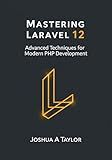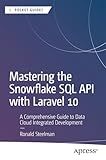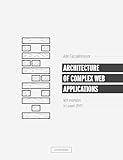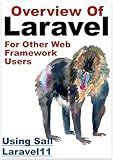Best Laravel Database Tools to Buy in December 2025

Laravel: Up & Running: A Framework for Building Modern PHP Apps



Laravel 12 for Beginners & Beyond: A Complete Guide to Building Modern PHP Web Applications with Clean Architecture, Hands-On Projects, and Best Practices



Mastering Laravel 12 : Advanced Techniques for Modern PHP Development



Mastering the Snowflake SQL API with Laravel 10: A Comprehensive Guide to Data Cloud Integrated Development (Apress Pocket Guides)



Architecture of complex web applications. Second Edition.: With examples in Laravel(PHP)



Laravel 7.X : LEARN BASIC LESSONS & BUILD A CRUD APP (PHP Framework)



The Laravel Survival Guide: Written & Updated for Laravel 5.3



Laravel Essentials: Tips & Tricks for Developers: Master Laravel with Practical Tips for Every Developer



Overview Of Laravel PHP Framework: For Other Web Framework Users


To drop a foreign key in Laravel migration, you can use the dropForeign method provided by the Schema facade. This method allows you to drop a foreign key constraint from a table.
Here's an example of how to drop a foreign key in Laravel migration:
- Open the migration file where you want to drop the foreign key.
- Inside the up method, use the dropForeign method as follows:
use Illuminate\Database\Schema\Blueprint; use Illuminate\Support\Facades\Schema;
class DropForeignKeyMigration extends Migration { public function up() { // Drop foreign key Schema::table('your_table_name', function (Blueprint $table) { $table->dropForeign(['foreign_key_column']); }); }
public function down()
{
// Re-create the foreign key (optional)
Schema::table('your\_table\_name', function (Blueprint $table) {
$table->foreign('foreign\_key\_column')
->references('id')->on('referenced\_table');
});
}
}
In the above code, replace 'your_table_name' with the actual name of the table and 'foreign_key_column' with the actual name of the column that has the foreign key constraint.
- You can also choose to re-create the foreign key in the down method. This is optional and depends on your needs. If you want to recreate the foreign key in case you need to rollback the migration, you can use the foreign method provided by the Blueprint class.
- Save the migration file and run the migration command to drop the foreign key constraint:
php artisan migrate
Upon running the migration, the foreign key constraint will be dropped from the specified table.
Are there any considerations to keep in mind when dropping a foreign key in a production environment?
Yes, there are several considerations to keep in mind when dropping a foreign key in a production environment:
- Data Integrity: Dropping a foreign key constraint can lead to data integrity issues if there are related records in the dependent table. Make sure that the associated data is handled properly or updated before dropping the foreign key.
- Cascading Effects: If the foreign key is being used in other parts of the database, dropping it may have cascading effects on other tables or queries that rely on it. Analyze the impact on other parts of the system and ensure they are handled appropriately.
- Performance: Foreign keys can provide performance benefits by enforcing referential integrity and optimizing queries. Dropping a foreign key may negatively impact query performance, so it's important to evaluate the potential consequences and make necessary optimizations if required.
- Application Dependencies: Consider any application dependencies that rely on the foreign key. Dropping it may require modifying related application code or configurations to ensure the application continues to work correctly.
- Backups and Recovery: Before making any changes, ensure that proper backups are taken to have a recovery point in case anything goes wrong during the process.
- Maintenance Windows: Dropping a foreign key constraint can cause some downtime for the system. Plan a maintenance window during low-traffic periods to minimize the impact on users.
- Testing: It's essential to thoroughly test the impact of dropping the foreign key in a staging or test environment before performing the action in the production environment. This helps to identify any unforeseen issues or consequences.
- Documentation: Keep track of all changes made to the database schema, including the dropping of foreign keys, and update relevant documentation to reflect the changes.
It is important to involve database administrators, developers, and other stakeholders in the decision-making process to ensure a smooth transition and minimize any potential risks.
How does Laravel handle database migrations?
Laravel handles database migrations through the use of its built-in migration system.
The migration system allows developers to define database schema changes in a series of migration files, which are executed sequentially to make changes to the database schema. These migration files are typically stored in the database/migrations directory.
Each migration file contains two important methods: up() and down(). The up() method defines the changes needed to upgrade the database schema, while the down() method defines the reverse changes to downgrade the schema.
Developers can use the Laravel artisan command php artisan migrate to execute all pending migrations and apply the database changes. Laravel keeps track of the migrations that have been executed, so it only runs new migrations that have not been applied yet.
In addition, Laravel provides helpful methods for creating tables, modifying columns, adding indexes, and performing other common database operations within the migration files. This makes it easier to write and maintain database schema changes.
If there's a need to rollback a migration, developers can use the php artisan migrate:rollback command to undo the last batch of migrations. The down() methods defined in migration files are used for rollbacks.
Overall, Laravel's migration system simplifies the process of managing and versioning database schema changes in a Laravel application.
How can I drop a foreign key if it belongs to a different database schema in Laravel?
In Laravel, you can drop a foreign key if it belongs to a different database schema by using the DB class to execute a raw SQL query. Here's how you can do it:
- Import the DB facade at the top of your file by adding use Illuminate\Support\Facades\DB;.
- Use the DB::statement() method to execute a raw SQL query. Within this method, write the SQL query to drop the foreign key constraint. For example, if you have a foreign key named fk_orders_users in the orders table that belongs to a different schema named other_schema, you can drop it with the following code: DB::statement('ALTER TABLE other_schema.orders DROP FOREIGN KEY fk_orders_users'); Make sure to replace other_schema with the actual name of your schema and fk_orders_users with the name of your foreign key constraint.
- You can place this code within a controller or a migration file, depending on where you need to drop the foreign key.
Remember to run the Laravel migration to execute the code. If you are using a migration file, you can use the artisan command php artisan migrate to run all pending migrations and execute the code to drop the foreign key.
Are there any limitations or restrictions when dropping foreign keys in Laravel?
Yes, there are some limitations and restrictions when dropping foreign keys in Laravel:
- Foreign keys can only be dropped if they exist. If you try to drop a non-existing foreign key, an exception will be thrown.
- Foreign keys cannot be dropped if there are existing records in the table that violate the foreign key constraint. You need to delete or update the related records first before dropping the foreign key.
- If the table that has the foreign key is using the MyISAM storage engine, dropping the foreign key may require table re-creation, which can be a time-consuming operation for large tables.
- Dropping a foreign key will also drop any associated indexes created for that foreign key. If you want to keep the indexes, you need to manually recreate them after dropping the foreign key.
It is important to be cautious when dropping foreign keys, as it can impact the integrity and consistency of your database relationships.
Can you drop a foreign key without affecting the existing data in the database?
Yes, you can drop a foreign key without affecting the existing data in the database by using the cascading options while dropping the foreign key.
Most database management systems provide a cascading option to handle the deletion of foreign keys. By using this option, you can drop a foreign key without affecting the existing data.
For example, in SQL Server, the following syntax can be used to drop a foreign key with cascading:
ALTER TABLE TableName DROP CONSTRAINT ForeignKeyName
Make sure to replace "TableName" with the name of the table containing the foreign key, and "ForeignKeyName" with the actual name of the foreign key constraint.
By default, the cascading option is not enabled, so dropping a foreign key may fail if there are existing referencing rows. However, by utilizing the cascading option, the database management system will automatically delete the referencing rows before dropping the foreign key, thus preserving the existing data in the database.
Can you drop a foreign key from a migration file without migrating it immediately?
Yes, you can drop a foreign key from a migration file without migrating it immediately by using the Schema::table method in Laravel.
Here's an example of how you can drop a foreign key in a migration file without migrating it immediately:
- Open your migration file.
- Use the up method to drop the foreign key constraint but don't run the migration immediately. Here's an example:
use Illuminate\Database\Migrations\Migration; use Illuminate\Database\Schema\Blueprint; use Illuminate\Support\Facades\Schema;
class DropForeignKeyConstraint extends Migration { /** * Run the migrations. * * @return void */ public function up() { Schema::table('table_name', function (Blueprint $table) { $table->dropForeign(['column_name']); }); }
/\*\*
\* Reverse the migrations.
\*
\* @return void
\*/
public function down()
{
// Write the code to add the foreign key constraint again if needed.
}
}
By using the Schema::table method within the up method, you can modify the table structure without running the migration immediately. When you're ready to execute the migration, you can run the migrate command.
Keep in mind that the down method is used to reverse the changes made in the up method. So, if you want to add the foreign key constraint again, you need to write the necessary code in the down method.
What is the role of the onDelete and onUpdate methods when dropping a foreign key in Laravel migration?
The onDelete and onUpdate methods are used in Laravel migrations to specify the actions to be performed when dropping or updating a foreign key.
When dropping a foreign key, the onDelete method is used to specify the action to be taken on the related records in the foreign table when the referenced record in the primary table is deleted. The possible options include:
- cascade: This option will cause the related records in the foreign table to be deleted when the referenced record in the primary table is deleted.
- restrict: This option will prevent deletion of the referenced record in the primary table if there are related records in the foreign table.
- set null: This option will set the foreign key value to null in the related records in the foreign table when the referenced record in the primary table is deleted.
- no action: This option will not perform any action on the related records in the foreign table when the referenced record in the primary table is deleted.
Similarly, the onUpdate method is used to specify the action to be taken on the related records in the foreign table when the referenced record in the primary table is updated. The available options are the same as in onDelete method.
In summary, these methods provide a way to define the desired behavior for the related records in the foreign table when the referenced record in the primary table is deleted or updated.
What happens if the foreign key being dropped is referenced by other tables in the database?
If the foreign key being dropped is referenced by other tables in the database, the database management system (DBMS) will typically prevent the user from dropping the foreign key constraint. The DBMS will throw an error or exception indicating that there are still dependent references to the foreign key, and it cannot be dropped until these dependencies are resolved.
To drop a foreign key that is referenced by other tables, the user needs to either:
- Remove or modify the dependent references: The user would need to identify and update or delete the records in the other tables that reference the foreign key being dropped. This way, the dependent references are removed or modified, allowing the foreign key to be dropped.
- Drop the dependent tables: If the other tables that reference the foreign key are no longer necessary or can be recreated later, the user can choose to drop those tables. This will automatically remove the dependent references and then allow the foreign key to be dropped.
It is important to be cautious when removing foreign keys and ensure that the necessary data integrity and relationships are maintained in the database. It's recommended to perform a thorough analysis of the dependencies before dropping any foreign key constraint.
Can you drop a foreign key using Laravel Schema Builder methods?
Yes, you can drop a foreign key using the Laravel Schema Builder methods. The dropForeign method is used to drop a foreign key constraint from a table.
Here is an example of how to drop a foreign key using the Laravel Schema Builder:
Schema::table('table_name', function ($table) { $table->dropForeign(['foreign_key_column_name']); });
In this example, table_name is the name of the table where the foreign key constraint exists, and foreign_key_column_name is the name of the column that has the foreign key constraint.
